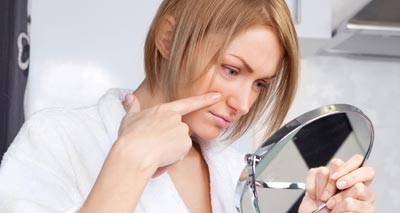
There are some obvious skin conditions that you need to look out for. The primary one being skin cancer. But there are certain other skin conditions that you need to keep an eye out for because they are a symptom of things that are just as dangerous.
Keep A Lookout
Your epidermis (skin) is your body’s largest organ. Being on the outside of your body means that it is very easily observable. There are certain things you can easily look out for that will offer you clues to how your health is. Unfortunately, it isn’t as easy to read and interpret as a book, but you can still notice when certain things aren’t quite right. Many skin changes could be multiple things.
For instance, if you start feeling itchy all over your body, this could be anything from dry air or it could be kidney failure. Luckily, dry air is the more likely option. So, you don’t want to jump to conclusions. To be sure of your skin conditions, it is always advised to seek medical advice from a GP or a dermatologist. If there is anything out of the ordinary, they will be able to diagnose it properly.
There are a few skin changes that actually do indicate that there is something more serious to worry about. Most of us know to look out for signs of skin cancer. You can indicate this from sores that won’t heal, moles that change colour or shape, bleed, change size, or ooze. Below are some signs that your skin tells you that indicate there is a bigger problem.
Blisters and Bumps That Itch
There is a chronic skin condition called dermatitis herpetiformis (DH) that is caused by celiac disease. The signs that you have this disease are that you repeatedly get intense itchy clusters of bumps and/or blisters on places like your knees, elbows, forearms, or butt. People who get DH don’t usually get the signature stomach symptoms of celiac disease. When people get this, their symptoms are mild and can include things like diarrhea, cramping, and abdominal pain. If left untreated, you will put yourself at risk to have intestinal damage, with an increased risk of blood cancers, like lymphoma, among others. As long as you adhere to a very strict gluten free diet, you can reduce your risk. This means that if you notice your skin acting weird, go to the doctor and get a diagnosis. Do not let your DH be uncontrolled and unconfirmed. If the doctor is unsure of what you have by simply looking at your skin, they can take a skin biopsy to get a clear diagnosis and see if there are telltale signs of antibodies.
Thick Palms
If your palms ever become velvety and thick, with their fine lines and ridges becoming very pronounced, this is a sign that you most likely have tripe palms. This name was given because people who have this, their hands resemble boiled beef tripe. This is a really rare condition to have but it indicates cancer to the stomach or lungs over 90% of the time. Doctors don’t know why this particular symptom happens when tumors are growing on lungs and the stomach. But the important thing is that if you notice your palms getting this symptom, go to your doctor immediately. This usually appears before most other cancer symptoms, so it acts as an early warning.
Yellowing Skin
This is actually a common symptom for newborn babies. You can see yellow in the skin and in the whites of the eyes. For babies, this indicates that their liver isn’t functioning properly yet, but it can fix itself, most of the time. When jaundice happens in adults, this is more of a problem. This is the most common symptom for liver disease or failure. It can be caused by a number of things, such as hepatitis, cirrhosis, a gallstone, a tumor blocking the bile duct, a bug, or even supplement induced liver injury. Whatever the actual cause is, as soon as you notice yellowing in your skin or eyes, seek medical help immediately.
Skin Patches
Velvety, thick patches of skin are referred to as acanthosis nigricans. These patches are darker than your natural skin tone and will appear where your skin creases. The most common places are your armpits and neck. These are usually benign, meaning they are not cancer. But they can be caused by high doses of niacin. If you are not taking this, it is a sign of insulin resistance. Meaning that you are at risk of diabetes.
One of the most common ways prediabetes and diabetes manifest in the skin is through acanthosis nigricans. There are other symptoms on your skin to look out for that indicate diabetes.
These include:
-thick, waxy, tight skin on your fingers, hands, and toes
-brown spots on your skins or
-pea sized, yellowish bumps on the body
Any and all of the above indicate diabetes and you should go see your doctor about it. For prediabetes, if you catch it soon enough, you can stop yourself from getting diabetes and reverse the effects. Whereas if you wait when you have prediabetes, you can get diabetes, which isn’t reversible once you have it.
